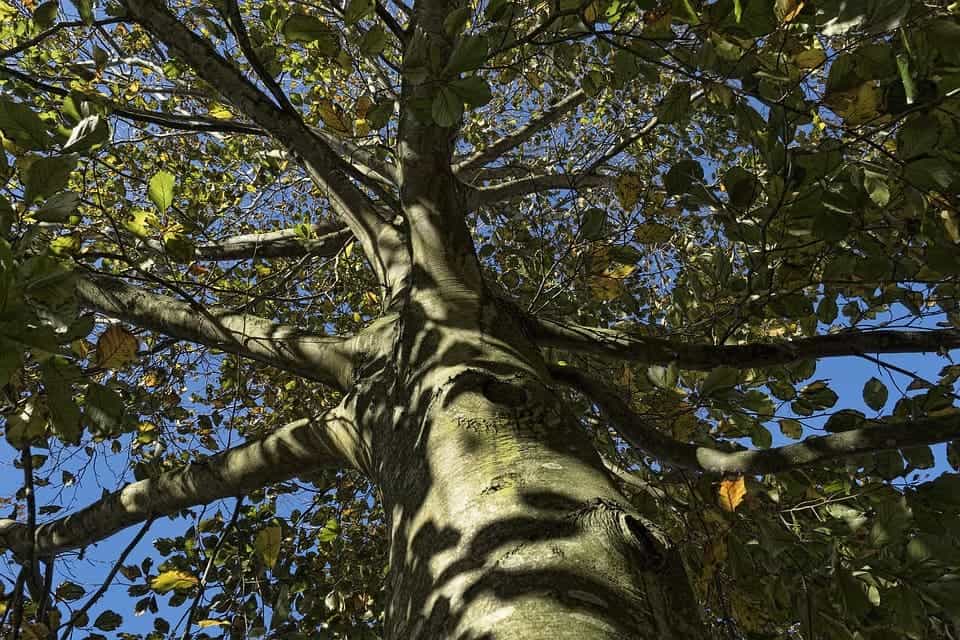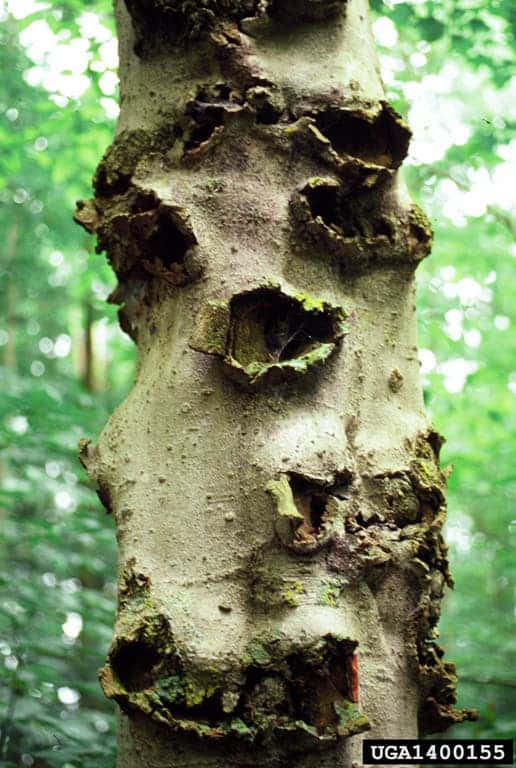Increased temperatures and precipitation in the past 30 years, brought about by climate change, have made it possible for beech trees to thrive in the northeastern United States. But when someone moves into a new place, it can get too crowded. The new influx of beech trees is suffocating other species of native woodlands, thereby affecting the forest ecosystem badly and also the industries associated with it.

The American beech (Fagus grandifolia) is easily recognized from a distance by its smooth, steel-gray bark and tapering surface roots at the base of its trunk. Unlike most other hardwood trees, the American beech retains this smooth bark throughout its “mature” years, which is a favorite of children and teenagers who love to carve their initials into the large, smooth trunks.
This large tree species is often used for firewood but its fine-grained timber is considered of lower commercial value compared to birch or maple, which are more desirable for furniture and flooring.
According to scientists at the University of Maine and Indiana’s Purdue University, beech trees have been expanding rapidly throughout the northeastern U.S., as well as southeastern Canada. The team led by Aaron Weiskittel, an associate professor at the University of Maine, studied data from the U.S. Forest Service spanning 30 years, from 1983 to 2014. The analysis revealed that the forest composition in the states of New Hampshire, New York, and Vermont has changed dramatically in the intervening years.
Specifically, beech trees are dominating, growing substantially while red maple, sugar maple, and birch are decreasing. The areas most prone to beech expansion were key tourist areas such as the White Mountains of New Hampshire, the Adirondack Mountains of New York and the Green Mountains of Vermont.
“There’s no easy answer to this one. It has a lot of people scratching their heads,” Weiskittel said. “Future conditions seem to be favoring the beech, and managers are going to have to find a good solution to fix it.”

Cankered stem of a beech tree following attack by beech scale and infection by Neonectria (beech bark disease complex) in Ontario. Credit: Linda Haugen, USDA Forest Service, Bugwood.org.
In the long run, beech trees could have a negative effect on the economic activity of local loggers and timberlands. Perhaps most worrisome of all is that beech trees carry beech bark disease, which kills young trees and also the new trees that replace them. Beech Bark Disease (BBD) is the outcome of an insect-fungus complex, which occurs when a non-native beech scale insect (Cryptococcus fagisuga) feeds on beech bark, creating cracks through which native canker fungi (Nectria canker) can enter into the tree. 50-85% of infected beech trees will die within 10 years of infestation. Older trees, particularly those that are decayed, are also at risk of the disease.
“We’re really dealing with the fallout from climate change, and how do we manage to accommodate for that,” he said.
Besides rising temperature and precipitation produced by climate change, Weiskittel says that beech trees’ range will likely expand even more because they’re not appealing to deer, which munch on the seedlings of other species of trees.
“Climate-associated changes in forest composition have been widely reported, particularly where changes in abiotic conditions have resulted in high mortality of sensitive species and have disproportionately favoured certain species better adapted to these newer conditions.” the authors concluded in a paper published in the Journal of Applied Ecology.
Was this helpful?



